ARCHIVE - History
 THE HERITAGE OF THE HUSKY OPERATION
THE HERITAGE OF THE HUSKY OPERATION
Almost at the beginning of SP 85, the road on which the Agricamping Sophia faces,
the roadway is narrowed to make room for a casamatta built during the Fascist era in belief that it could be useful in case of invasion
ally .
The entire Iblean territory is dotted with similar structures . Needless to say, they were set up for a
old-fashioned and over-conceived way to conceive of the war events that would soon happen. In other words, it was only a waste of energy and reinforced concrete, since the dynamism of the movements
allies and the poor equipment of the insufficient Italian-German forces rendered them irrelevant.
South Eastern Sicily was the scene of that
Operation Husky which indelibly marked the history of the twentieth century. Here the sad memories of war are still alive...
 NON SI PARTE RIOTS
NON SI PARTE RIOTS
Perhaps not everyone knows that from the end of 1944 to the beginning of 1945, South-East Sicily was upset by a series of riots, which resulted in real rebellions, following the decision of the infant United Kingdom of South to recall arms are a lever of young people who have now considered the war closed for a couple of years. There was certainly the same importance for a grain tax, namely the establishment of so-called "Granai del Popolo", which struck the provinces of Ragusa and Syracuse more.
These events are remembered today as the
Moti del non si parte.
The most serious episodes were certainly those of Comiso and Ragusa.
In Comiso, a city today known for its new airport, between 5 and 6 January 1945, the carabinieri were captured by about five hundred people who also forced the police to surrender. They proclaimed the
Republic of Comiso...
 BETWEEN ARCHAEOLOGICAL TREASURES (AND DO NOT KNOW IT) - WHY SOPHIA
BETWEEN ARCHAEOLOGICAL TREASURES (AND DO NOT KNOW IT) - WHY SOPHIA
Ancient and classical culture have left such profound and indelible traces in Sicily that no other civilization or domination that has taken place in the course of history has ever succeeded in erasing or making people forget. The ancient historical accounts, often seasoned with legendary aspects and geographical inaccuracies, have helped to enrich the mythical aura that surrounds the island. So
Hybla, legendary city-state of the Sicilian king
Hyblon, proud opponent of the Greek Syracuse, is today sought by Paternò in Ragusa, from Piazza Armerina to Pantalica, in relation to clues historical and archaeological. For example, Thucydides (460 a.C.-404 a.C.) mentions three distinct cities; instead, Herodotus (484 BC-430 BC) and Tito Livio (59 BC-17) speak of a single Hybla. It is historically probable that several "Hybla" in the eastern part of the island have cyclically...
 THE PORT OF ELORO
THE PORT OF ELORO
We have already spoken extensively about Eloro
here and
here. It is no secret that he considers it
among
the most fascinating places in the
district and when I have the opportunity, for example to act as a guide to
some friends, I go there with pleasure. Just during one of my last walks along
the "path" that "connects" the beach of Eloro with the
Pizzuta beach, I had the opportunity to focus on some rock formations that,
given their particular shape, have always aroused my curiosity, suggesting not
only that they had nothing natural (and therefore they were linked to the
archaeological remains abandoned behind the fence) but...
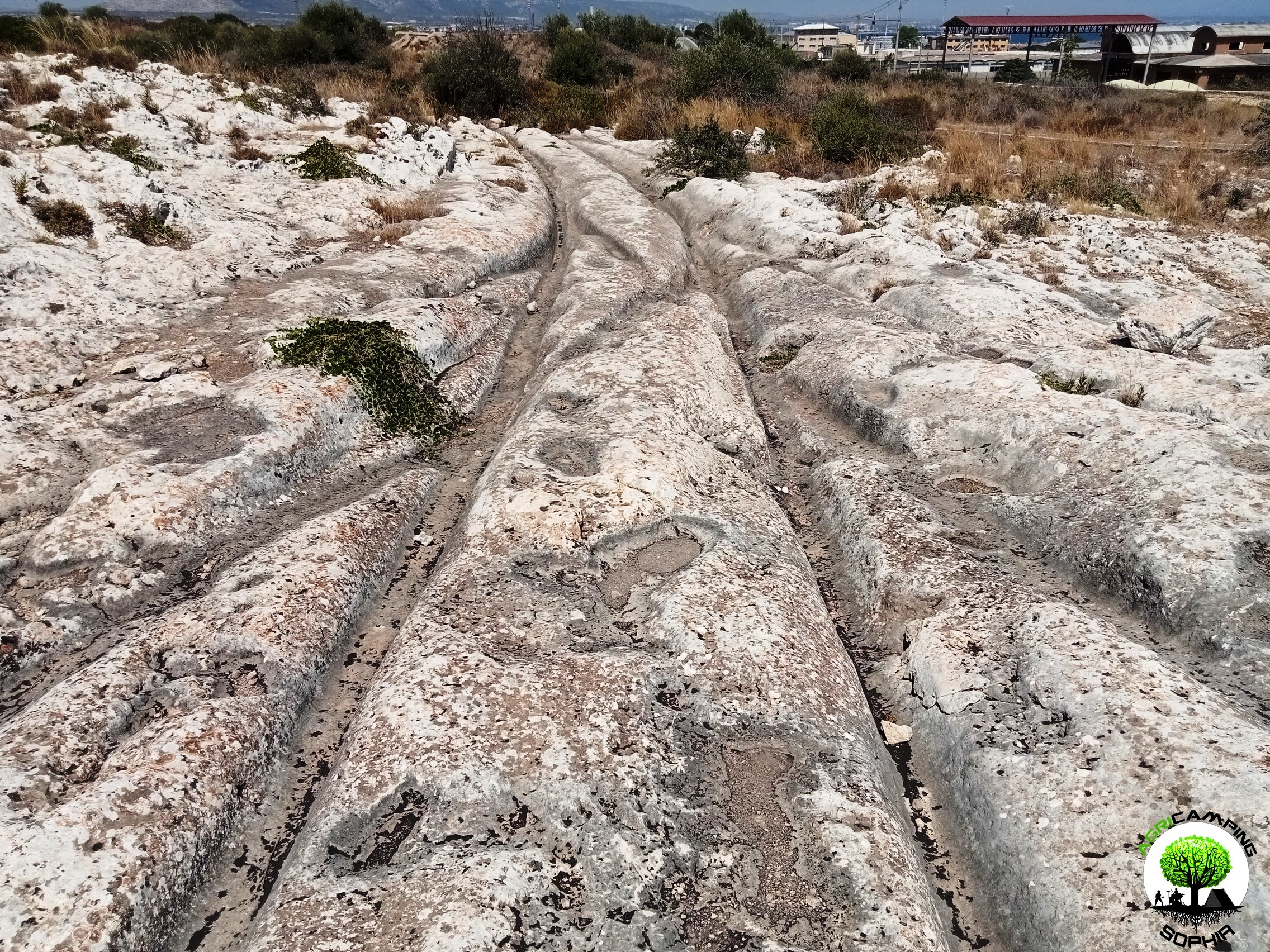 THE PROBLEM OF CART RUTS IN SOUTH-EASTERN SICILY (PART ONE)
Who I am
THE PROBLEM OF CART RUTS IN SOUTH-EASTERN SICILY (PART ONE)
Who I am
Rereading the final draft of what I have written, I think it is appropriate to spend a few lines to introduce myself. I am Antonino Rampulla, owner of the agri-campsite whose website hosts this blog, a graduate in philosophy, with a growing passion for archaeology, born from curiosity for the archaeological sites of which, in particular, south-eastern Sicily is rich. Certain of my substantial ignorance on the subject, I try to make up for it by studying in my free time. However, not infrequently, I happen to come across historical certainties, academically shared, that clash a bit with what logic seemed to suggest to me from the observation of some details of the archaeological sites visited. So, simply, I ask myself questions and, with the most scientific approach possible, I try to look for answers. The result is the pretext to search for...
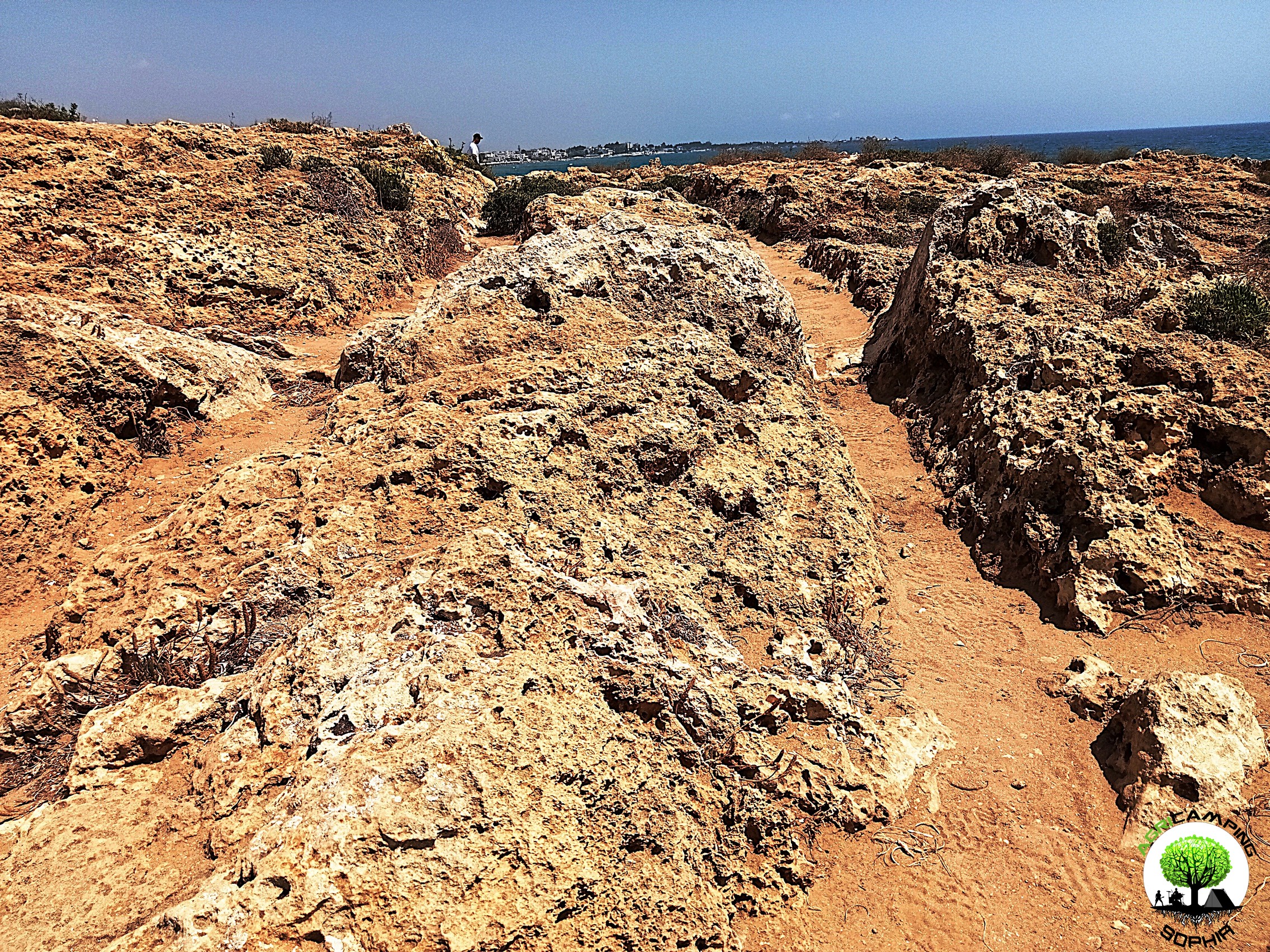 THE PROBLEM OF CART RUTS IN SOUTH-EASTERN SICILY (PART TWO)
Click here to return to FIRST PART
The Greek chariot
THE PROBLEM OF CART RUTS IN SOUTH-EASTERN SICILY (PART TWO)
Click here to return to FIRST PART
The Greek chariot
In relation to the faithful reconstructions of the tools used at the time, recently made in
Selinunte and in
Valle dei Templi, and in comparison with
Study of a Roman Cart by Paola...
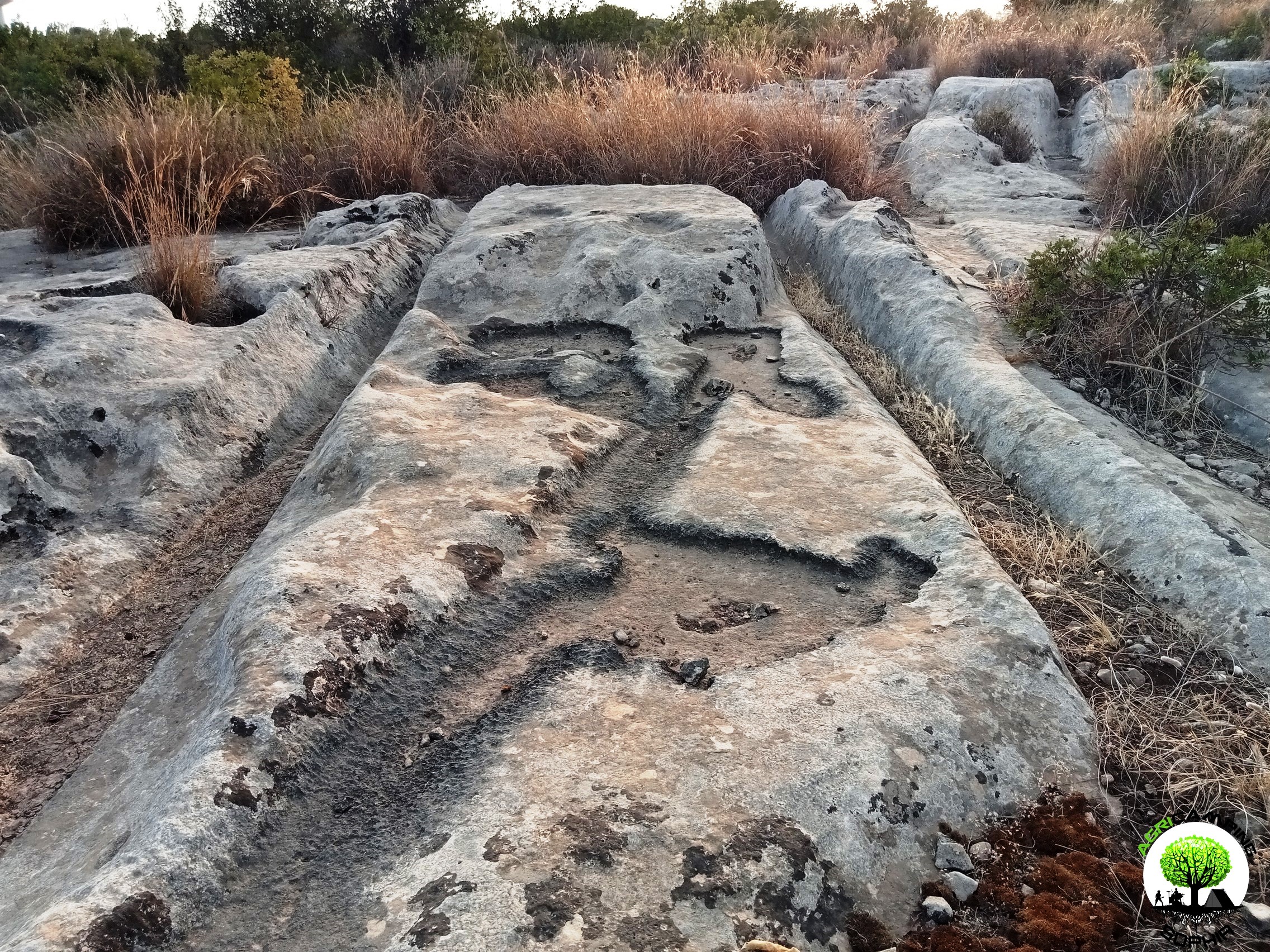 THE PROBLEM OF CART RUTS IN SOUTH-EASTERN SICILY (PART THREE)
Click here to return to SECOND PART
Considerations on the theses of Mottershead, Pearson and Schaefer
THE PROBLEM OF CART RUTS IN SOUTH-EASTERN SICILY (PART THREE)
Click here to return to SECOND PART
Considerations on the theses of Mottershead, Pearson and Schaefer
I find this study extremely interesting, even if I am perplexed by this emphasis on the loss of hardness of the wet rock given that Malta is among the European territories at greatest risk of desertification (as is unfortunately also the south-eastern area of Sicily). We don't know exactly what the climate was like in Malta when the
cart ruts were made, as we don't even know for sure how old they were made. However, it might be understandable to take the
humidity factor as a starting point. n strong consideration, in relation to a territory constantly subject to rainfall, but why...
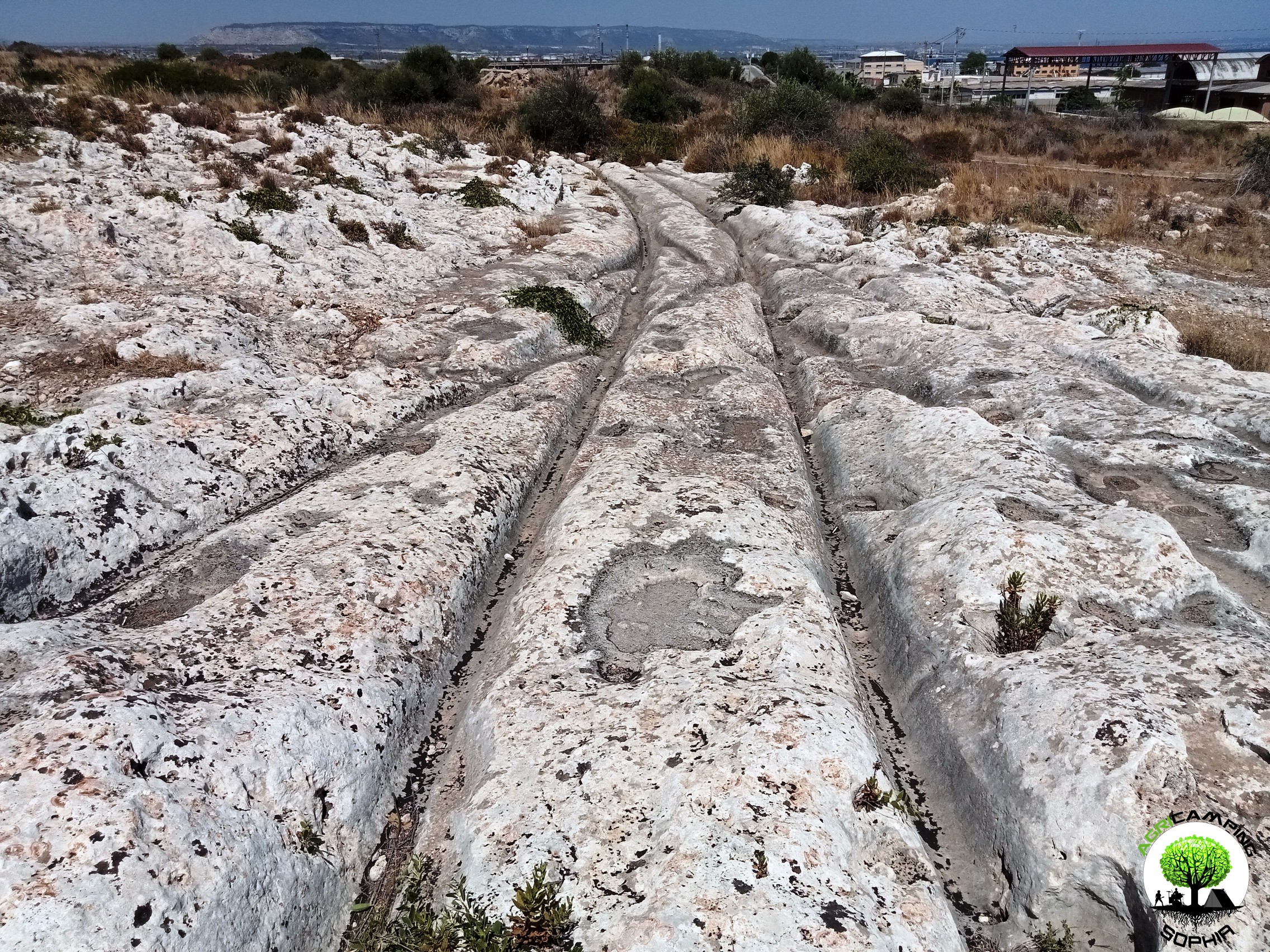 THE PROBLEM OF CART RUTS IN SOUTH-EASTERN SICILY (PART FOUR)
Click here to return to third part
Clapham Junction
THE PROBLEM OF CART RUTS IN SOUTH-EASTERN SICILY (PART FOUR)
Click here to return to third part
Clapham Junction
As in the Maltese site Misrah Ghar Il-Kbir, also in the Targia and Granatari Vecchi districts the
cart ruts intersect and cross each other in a similar way to the track switches in a railway station. The nickname
Clapham Junction that was given by David H. Trump to the Maltese site, derives precisely from the similarity with the famous English railway station. For Sagona these are agricultural furrows and water channels, for Mottershead, Pearson and Schaefer these are abandoned paths due to obstacles and wear. Obviously we do not...
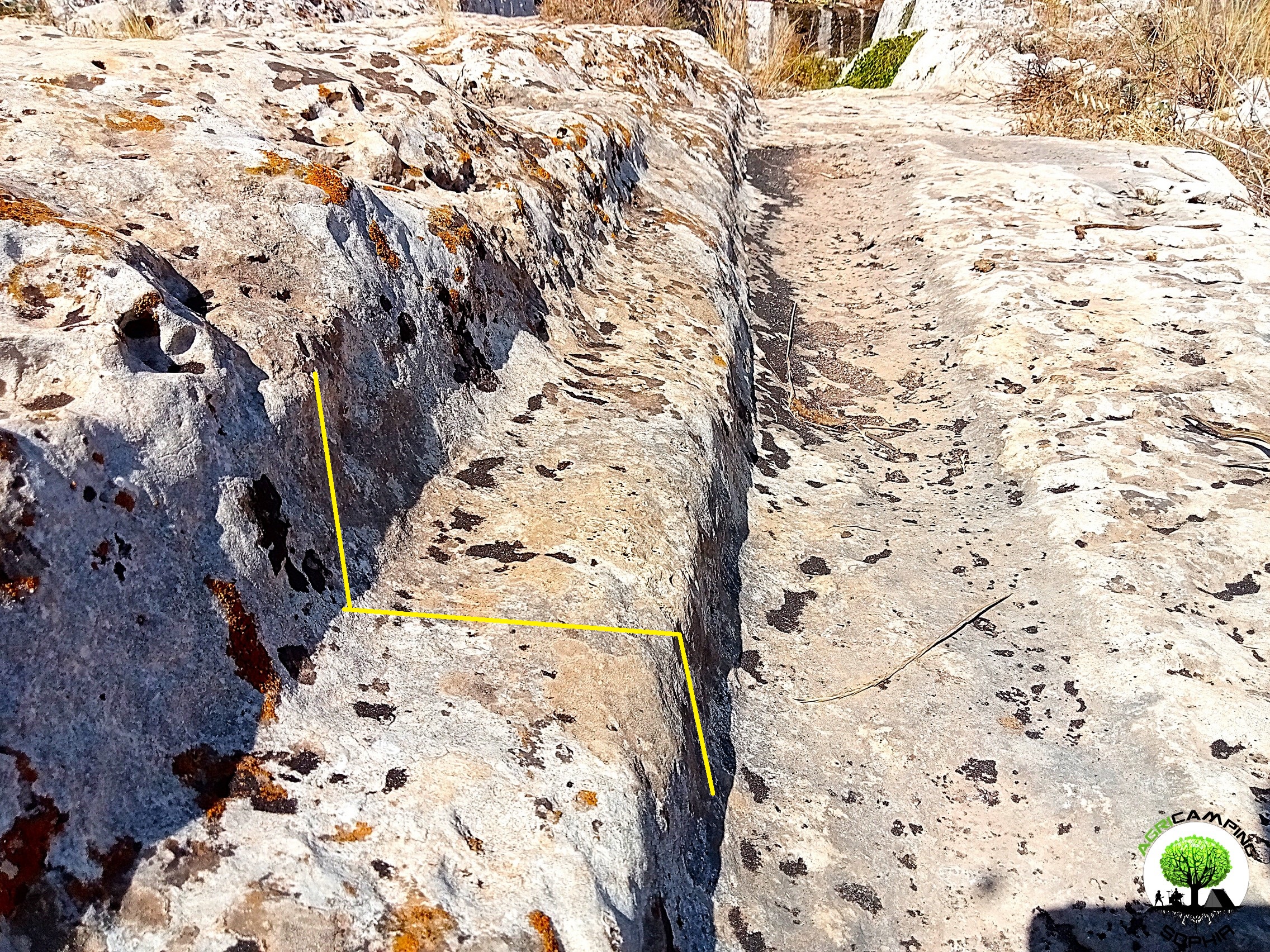 THE PROBLEMATIC EDGES OF THE CART RUTS
THE PROBLEMATIC EDGES OF THE CART RUTS
I will skip any preamble, referring to
to what has already been written regarding the presence of
cart ruts in south-eastern Sicily.
As can be seen in other sites around the world, in some
cart ruts I visited, in particular in the Cugni district in Pachino, in the Granati Vecchi district in Rosolini and in the Targia district in Syracuse, a clear border can be seen, a sort of frame, next to the grooves, more marked externally, barely noticeable internally.
The borders I measured have a width of 14-20 centimeters and a height of 8-10 centimeters.
Not all cart ruts have such frames present or particularly evident, regardless of the degree of wear or degradation. They are...
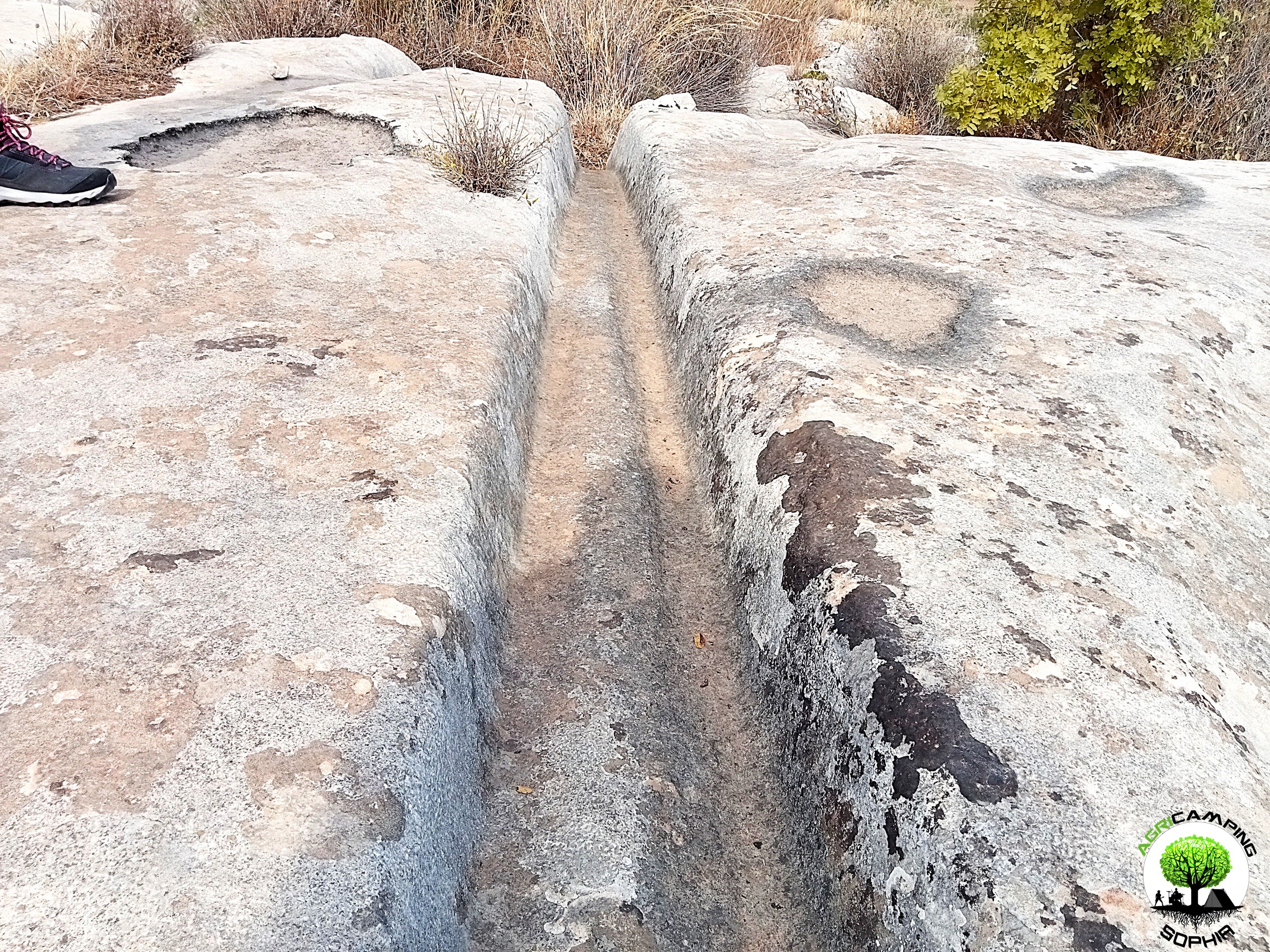 THE POLISHING OF THE CART RUTS
Read also THE PROBLEMATIC EDGES OF THE CART RUTS
THE POLISHING OF THE CART RUTS
Read also THE PROBLEMATIC EDGES OF THE CART RUTS
I will skip any preamble, referring to
to what has already been written regarding the presence of
cart ruts in south-eastern Sicily.
To proceed with this comparison I have chosen a probable capital and the corner of a recess present in a block of the northern walls of Eloro that would seem to resemble a
pinax, that is, a niche that would have housed a fresco of the
heroa, but which a more careful observation refers to a system functional to the grip of the block through a
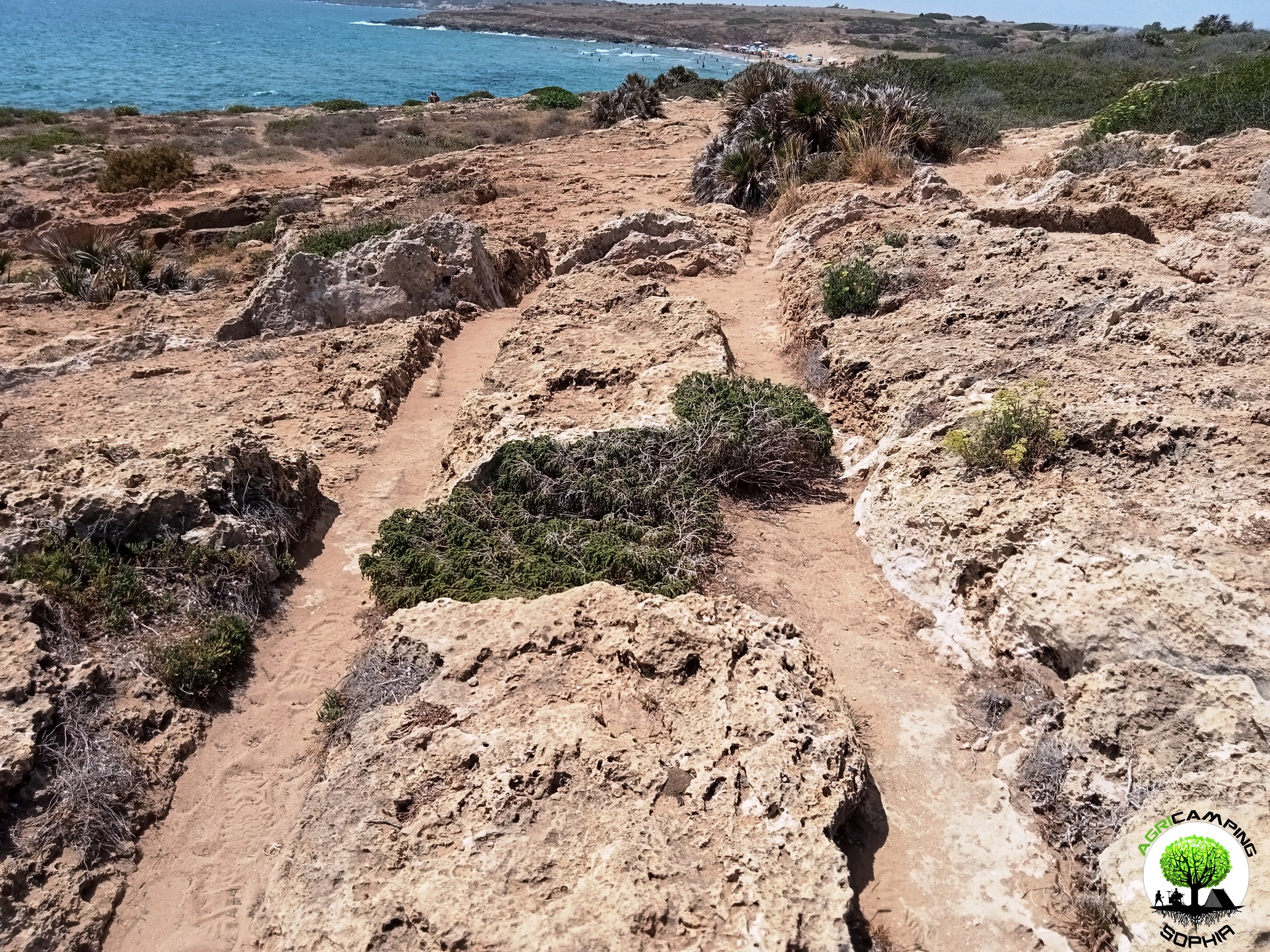 CART RUTS AND A FEW TOO MANY PROJECTIONS
Read also THE POLISHING OF THE CART RUTS
CART RUTS AND A FEW TOO MANY PROJECTIONS
Read also THE POLISHING OF THE CART RUTS
I will skip any preamble, referring to
to what has already been written regarding the presence of
cart ruts in south-eastern Sicily.Considering the possibility that the
cart ruts were gradually dug by the passage of carts pulled by pack animals, for example pairs of oxen, observing certain sections of the
cart ruts present in the Granatari Vecchi district, in Rosolini, and in the Pizzuta district, close to the Vendicari Reserve, two questions arise:
1. Why force the animals to pass over rough surfaces and protrusions high, compared to the...
 CART RUTS CUT FROM QUARRIES
Back to CART RUTS AND A FEW TOO MANY PROJECTIONS
CART RUTS CUT FROM QUARRIES
Back to CART RUTS AND A FEW TOO MANY PROJECTIONS
I will skip any preamble, referring
to what has already been written regarding the presence of
cart ruts in south-eastern Sicily.
The easy academic tendency has been, in most cases concerning
cart ruts, to consider them in terms of the
latomie, or quarries, with which very often (for example in the cases of the Targia or Pizzuta districts) they share the same territory.
According to this theory, the
carraie would have been indirectly created due to the wear of the rock at each passage of carts or sleds loaded with extracted...
 RACK OR HOUSING FOR CLOGS?
Read also CART RUTS CUT FROM QUARRIES
RACK OR HOUSING FOR CLOGS?
Read also CART RUTS CUT FROM QUARRIES
In the presence of slopes, even slight ones, in some
cart ruts in the Targia district, in Syracuse, central holes are found with a diameter of between 30 and 50 centimeters and a depth of 15-20 centimeters, spaced about 50 centimeters apart. Neither the position (they are not exactly in the center of the
cart ruts and perfectly aligned with each other), nor the shape appear perfectly regular: either the passage of time and any wear have profoundly modified their original shape or, simply, they have never had a systematic regularity. However, the offset in position between one hole and another is never completely “off-axis”: there is always a portion about twenty centimeters wide that...
 CART RUTS MODELED ON SOFT ROCK?
Read also RACK OR HOUSING FOR CLOGS?
CART RUTS MODELED ON SOFT ROCK?
Read also RACK OR HOUSING FOR CLOGS?
Some
cart ruts from the Targia district, in Syracuse, and most of the
cart ruts from Granatari Vecchi, in Rosolini, give the impression of having been impressed, modelled, on a rock that was originally viscous, not entirely solid. As absurd as this hypothesis may seem, especially in Granatari Vecchi, the softness of the shapes and the at least anomalous uniformity of the rock bank, as if it were a concrete casting, which hosts the
cart ruts, is
unicum compared to the lithic context in the area.
In Targia this phenomenon is less impressive but if we consider the
cart ruts essentially
cart tracks, therefore furrowed roads indirectly resulting from the...


 THE HERITAGE OF THE HUSKY OPERATION
THE HERITAGE OF THE HUSKY OPERATION NON SI PARTE RIOTS
NON SI PARTE RIOTS BETWEEN ARCHAEOLOGICAL TREASURES (AND DO NOT KNOW IT) - WHY SOPHIA
BETWEEN ARCHAEOLOGICAL TREASURES (AND DO NOT KNOW IT) - WHY SOPHIA THE PORT OF ELORO
THE PORT OF ELORO THE PROBLEM OF CART RUTS IN SOUTH-EASTERN SICILY (PART ONE)
THE PROBLEM OF CART RUTS IN SOUTH-EASTERN SICILY (PART ONE) THE PROBLEM OF CART RUTS IN SOUTH-EASTERN SICILY (PART TWO)
THE PROBLEM OF CART RUTS IN SOUTH-EASTERN SICILY (PART TWO) THE PROBLEM OF CART RUTS IN SOUTH-EASTERN SICILY (PART THREE)
THE PROBLEM OF CART RUTS IN SOUTH-EASTERN SICILY (PART THREE) THE PROBLEM OF CART RUTS IN SOUTH-EASTERN SICILY (PART FOUR)
THE PROBLEM OF CART RUTS IN SOUTH-EASTERN SICILY (PART FOUR) THE PROBLEMATIC EDGES OF THE CART RUTS
THE PROBLEMATIC EDGES OF THE CART RUTS THE POLISHING OF THE CART RUTS
THE POLISHING OF THE CART RUTS CART RUTS AND A FEW TOO MANY PROJECTIONS
CART RUTS AND A FEW TOO MANY PROJECTIONS CART RUTS CUT FROM QUARRIES
CART RUTS CUT FROM QUARRIES RACK OR HOUSING FOR CLOGS?
RACK OR HOUSING FOR CLOGS? CART RUTS MODELED ON SOFT ROCK?
CART RUTS MODELED ON SOFT ROCK?